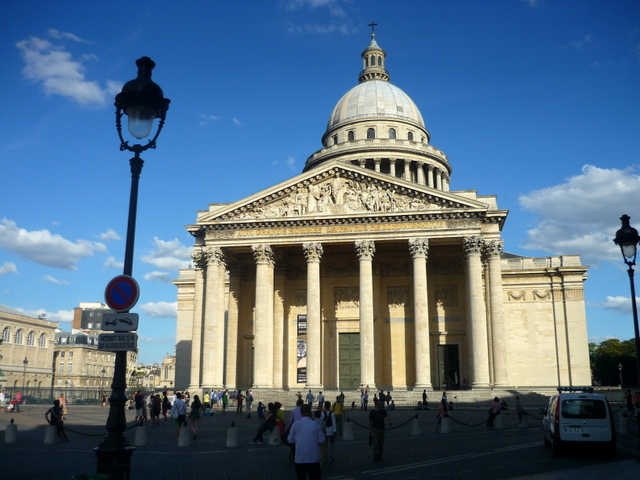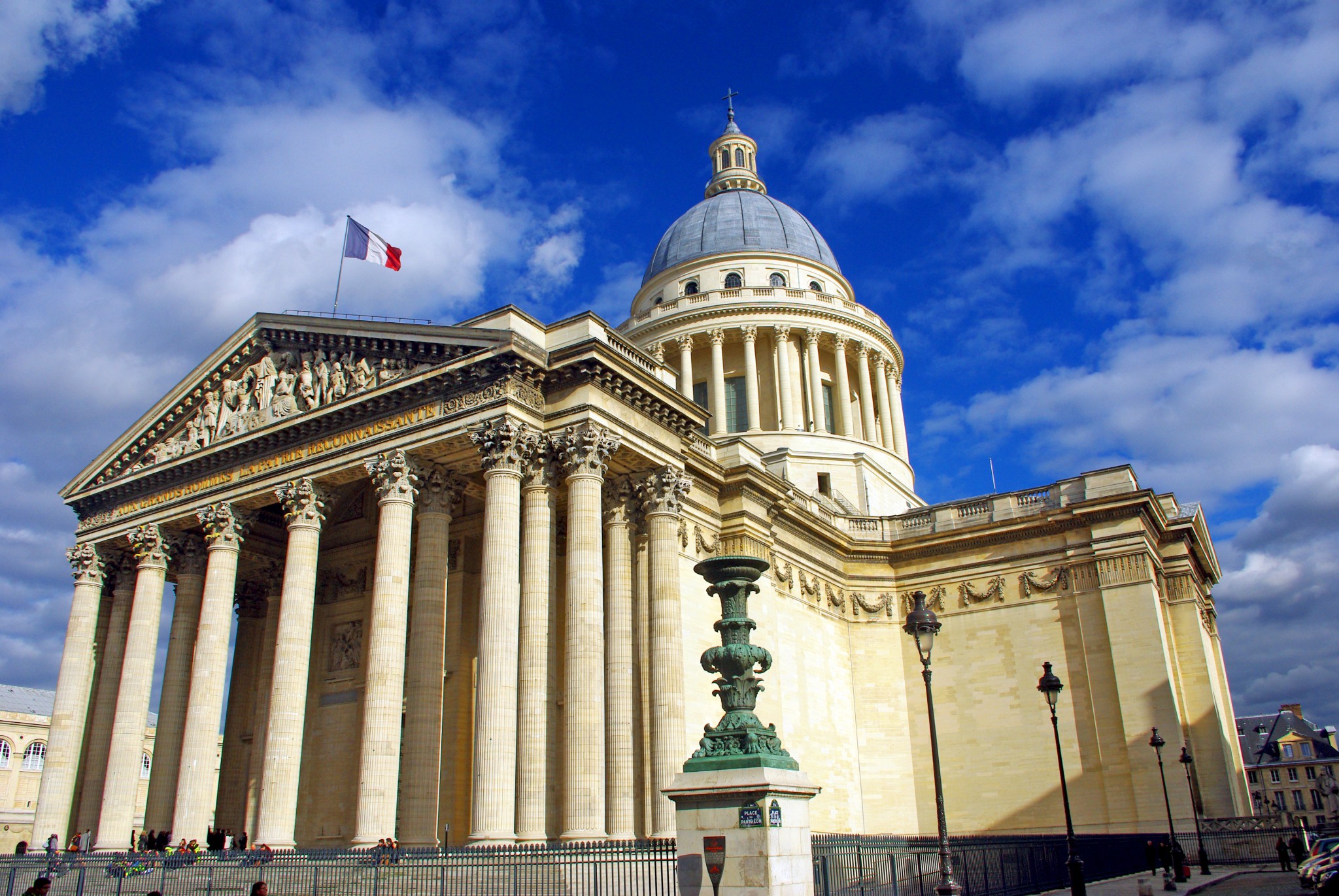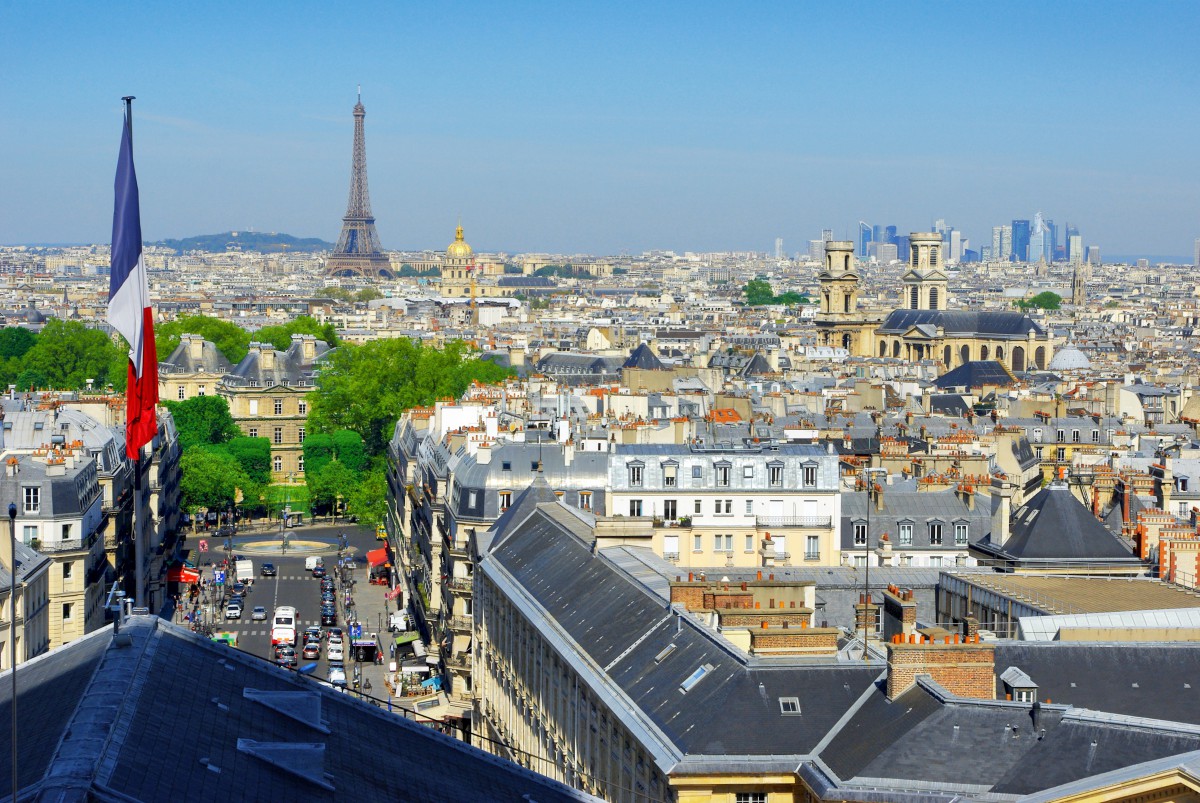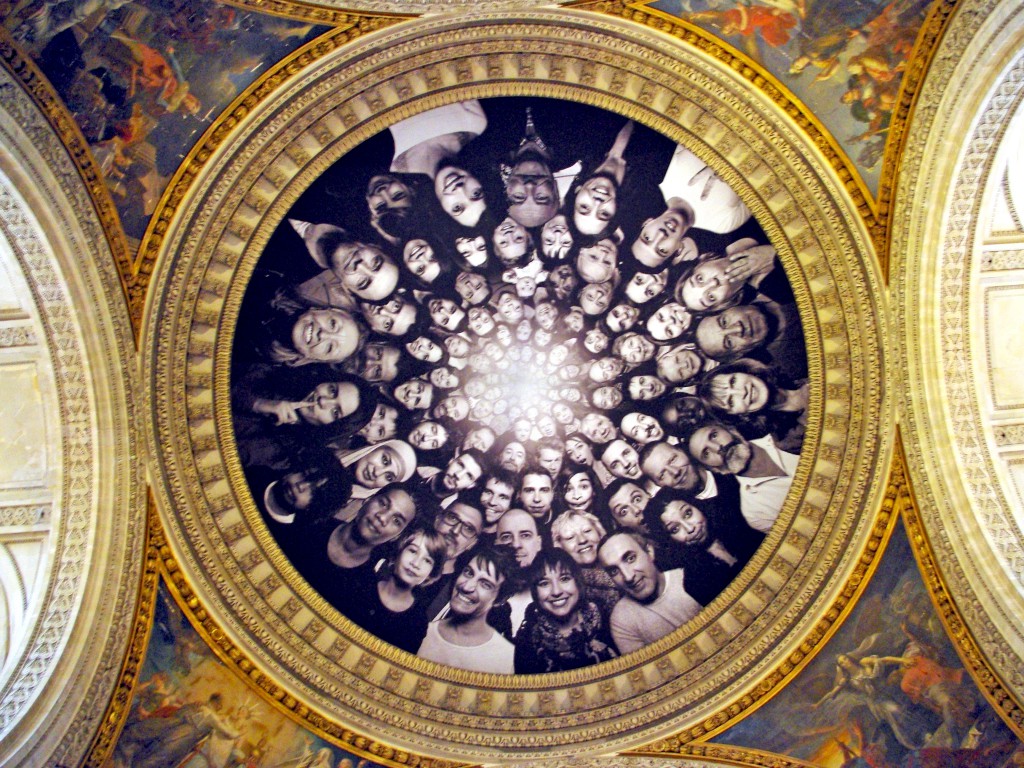The neo-classical Panthéon stands at the top of the Sainte-Geneviève hill in the 5th arrondissement. With its remarkable colonnaded dome, it shares some similitudes with St. Paul’s cathedral in London.
Its construction dates back to 1773 at a time when France was fascinated with all things Greek and Roman: column, geometry and engineering. It originated in 1744 when Louis XV was unexpectedly healed from a desperate illness. To thank God, the king commissioned the construction of a magnificent church dedicated to Sainte-Geneviève. Renowned French architect Jacques-Germain Soufflot designed the church in neo-classical style. Construction work started in 1764 and were completed in 1790, 10 years after the death of the architect. At the Revolution, the church was desecrated and affected to the tombs of the great men of the young French Republic. In 1806, Napoleon turned it back into a church before Louis-Philippe had it used as a necropolis. In the reign of Napoleon III, it became a church again and in 1885, the sanctuary was finally secularised to become a civic building. From then, it has becomes a necropolis of France’s greatest citizens and a popular national monument.

With its 22 Corinthian columns, the façade of the Panthéon was inspired by that of Rome. The bas-relief on the pediment by David d’Angers represents the mother country of France granting laurels to her great men.
The majestic dome is surmounted by a lantern tower reaching 83 metres that filters a little light into the centre of the sanctuary.
The crypt contains the tombs of many great French notables: Voltaire, Rousseau, Victor Hugo, Émile Zola, Jean Jaurès, Pierre and Marie Curie, Jean Moulin.






